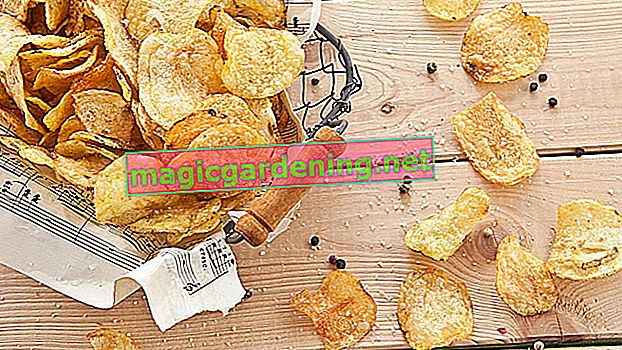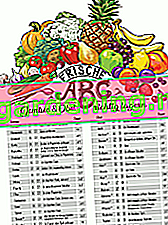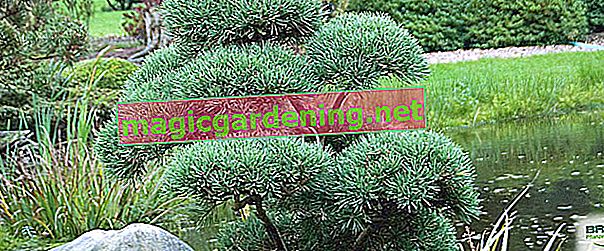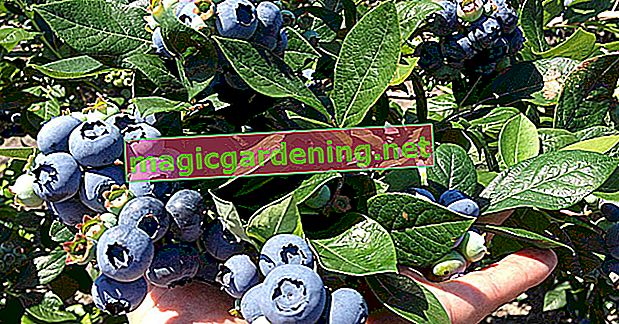
Prepare apple slices
Before you can start cutting the rings, you have to decide whether you want to dry the rings with or without a shell. They are a little firmer with the shell, but softer without.
- Choose a couple of equally sized and freshly picked apples. Keep in mind that the apple rings need a lot of space to spread out. Therefore, do not prepare too many slices. If there is still free space, you can add a few slices later.
- Wash the apples thoroughly and then dry them with a kitchen towel or just let them air dry.
- Use a core cutter to remove the housings.
- If you don't want the peel to stay on, you have to thinly remove it with a peeler.
- Cut the apples into 0.5 cm thick slices.
- Drizzle the apple slices with a little lemon juice so that they keep their light color after drying.
also read
- Dry vegetables - shelf life without any preservatives
- Drying apples - for versatile use every day
- Drying the pumpkin without shrinking - is that possible?
Tips
When drying apple rings with the peel, you should only use apples that you know for sure are unsprayed.
This is how you can dry the slices
Air-drying apple slices in the local latitude is hardly possible in an acceptable time due to damp and cool weather. This can only be attempted in warm and dry periods. Therefore, additional heat is usually added or generated:
- in the oven
- in a food dehydrator
- in the microwave
Dry apple slices in the oven
Although a higher temperature is set in the oven, the apple rings still take several hours to dry. Make sure that the oven is not needed for anything else during this time.
- Line one or more baking sheets with parchment paper.
- Spread the prepared apple slices on top in a single layer
- Slide the trays into the oven.
- Set the oven to max. 80 degrees Celsius. A circulating air function is an advantage, otherwise the position of the trays must be swapped during drying to achieve a uniform result.
- Leave the apple slices to dry in the oven for several hours, leaving the door ajar the whole time.
- Turn the apple rings in between.
The apple rings can be taken out of the oven when they feel completely dry and no more juice comes out. They should cool down on the baking sheet before they are stored in the cupboard.
Apple rings from the food dehydrator
The best result is achieved with an automatic dehydrator that is specially designed for such tasks. After filling, it carries out the drying process fully automatically.
- several layers can be dried at the same time
- it dries gently at low temperatures
Nowadays, a dehydrator can be found cheaply on the market and is therefore a worthwhile investment, with which not only apple rings can be made.
Express drying in the microwave
A handful of apple rings, for example as a snack for a TV evening, can be dried quickly using the microwave.
- dry in several passes
- at the lowest level
- open the door in between to allow steam to escape
Microwave drying proceeds very quickly and can easily turn into inedible results. So stay close and keep checking the degree of dryness.
Shelf life and storage
Dried apple rings are kept cool and dry in a tightly closed can. This way, they stay tasty for a whole year. Apple rings that have become softer can be baked in the oven and get back a piece of their crispness.
Conclusion for quick readers
- Preparation: wash apples; peel; Cut slices 0.5 cm thick; Drizzle with lemon juice
- Tip: You can also dry organically grown apples with the skin on
- Methods: Air, oven, microwave, or dehydrator drying
- Air drying: takes a long time, therefore only feasible on very warm days
- Oven: single layer; Max. 80 ° C circulating air; slightly open door; turn; takes hours
- Dehydrator: Dries slowly; gentle at low temperatures; fully automatic
- Microwave: Small amounts; lowest level; multiple passes; Let out steam
- Storage: After cooling down; cool and dry in a sealed container
- Shelf life: 12 months

The garden journal freshness-ABC
How can fruit and vegetables be stored correctly so that they stay fresh as long as possible?
The garden journal freshness ABC as a poster:
- Order here cheaply as an A3 print for your kitchen
- as a free PDF file to print out yourself








